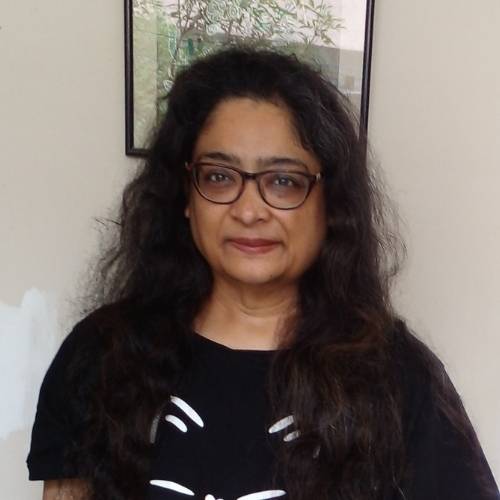“A novel” approach to technical writing by my dad K.S.Loganathan
Here I feature a very special interview. One with my dearest dad! His book is releasing shortly. Do read on for his beautiful answers to my questions.
- Tell us about your latest book. Why did you write it, and how does your work matter?
‘Reinforcing Fibers in Tires and Mechanical Rubber Goods’ is my second mega book on rubber technology. The first, Rubber Engineering’ was published by the McGraw-Hill companies in 1998. It is an aid to vocational education according to an international apprenticeship program in Rubber technology. It came at a time when the rubber industry was shifting eastward, and it was well-received. It was also a great business card for my emerging consultancy practice after a long tenure at Dunlop.
The half-life of an engineering or science degree is constantly decreasing due to technological developments but the attrition in one’s knowledge with age is not offset by academic textbooks or research papers. Keyword searches and posts on the Internet are not a substitute for a good education. In industry, lost knowledge, in particular “know-how” due to employee turnover or retirement or relocation of plants is a serious concern for even companies that have a training and succession plan. A rich legacy of technology of the pre-Internet era is unknown to the scholars in the present generation.
The current work is a self-education tool for practitioners in the inter-disciplinary field of textiles and rubber. It is a first-of-its-kind crossover design guide to rubber engineering with fibers. It is based on my industry experience and is targeted at young professionals entering the rubber industry from diverse academic backgrounds. I shoot for a practical rather than a purely theoretical book. Engineers are looking for current information and actionable advice rooted in reality to solve problems in their profession. The book includes various touchpoints with material science, engineering and tire mechanics, composite structures, processing and product designing for load-bearing, power transmission, and transport applications using terms that would be familiar to graduates from the various fields. As such, it is a professional and reference book.
2. How has the pandemic affected publishing?
COVID-19 has had a disastrous impact on the world’s creative industries, especially on the print media and the printed books industries. Even though people turn to books in difficult times, the publishing chain, which is vital to society, has been over-stressed. Conferences and trade exhibitions have been postponed or have gone virtual. The pandemic has also transformed the ossified educational system overnight into a fluid, digitized learning apparatus that can reach millions. The time is right for innovation in creating, collating, and disseminating knowledge and entertainment to the public in new and effective ways. Augmented reality used for knowledge capture is still in its infancy but may move centerstage in the time to come.
3. How do you determine your audience for this type of work?
A reference book has an academic audience for traditional and emerging subjects and industrial research groups for specialized topics. My book is on a subject that has so far not been taught in colleges or industrial training courses and there are few active practitioners in the field to serve as mentors. On the other hand, the end-products are mass-produced and sold and are of great importance to society and the environment. The potential audience who would never hear about the subject otherwise is large. It is much like selling shoes in a barefoot-village environment. Not everyone is in that place, but if you are, you might as well put your best foot forward.

4. How is technical writing different from fiction?
Technical writing is bound by verifiable facts and reality unlike fiction, which thrives on emotion and imagined experiences. Fiction readers want to be taken on a journey to another place and time with their favorite characters.
The vocabulary of scientific and technical/semi-technical words in industry usage is often different from the language used in everyday life, and it can cause a lot of trouble to the outsider or even the scientific community. In common parlance, “strength” is used to describe how powerful or resistant something is to withstand an applied force. In science, the term is a material property of isotropic (monolithic materials like metals), which is the limit to its load-carrying capacity. In composites, which often replace metals for light-weighting, especially in the aeronautical and automobile industries, the load-carrying capacity is determined by the local failure due to flaws and cracks, which propagate under impact and over-stressing. It is not a material property as such but a characteristic depicted by a similar parameter such as residual strength or compression after impact strength under critical stress. Much of the terminology in rubber and textile industries is a rollover from cotton fabric manufacture and metallurgy practices, which means that a term like strength can be confusing. The author cannot assume that the reader has a wide knowledge of all branches of engineering as opposed to common knowledge. The first task for an emerging discipline or for an author in an inter-disciplinary field of work is to develop the vocabulary and the vision to build a structure for the intended audience.
A structure is essential in the expression of technical facts and ideas. It is hard to find an unbiased, neutral work on any subject since so much of the publication chain depends on the profit principle and draws inspiration from war assembly lines.
5. How did you structure the book?
It is rare that in technical writing, one gets a blank canvas to paint on, so to speak. “Storytelling” has been a buzzword and a boredom-killing stratagem in business communication for a while. However, it would seem to be out of place in a scientific track if a Kalavathy were to appear every ten pages or so with a tall story to make a point. But the structure of a narrative – plot, character, theme, contradictions, and resolutions – can be gainfully employed in technical writing with the interpretation left largely to the reader. The story arc must unfold as the book progresses.
To begin with, I created and treated the subjects in the index as characters in the story to be introduced and developed as the plot thickens. Usually, the book index is the last job that the author does as a reader service when the book is almost ready to print. Putting these subjects down as post-its on a whiteboard and stringing them like good homicide detectives do on television, helps to introduce some order. The problem however is that there are more than 500 characters in my book – even the Mahabharata has only 300 characters or so. But I could downplay the role of minor characters as it is done in these stories.
The story arc is determined by the hierarchic nature of textiles – fibers, yarns, cords and fabrics to 1D, 2D, and 3D structures incorporated in various rubber products.
Long-form writing has practically disappeared from the industrial scene since the mid-1980s when statistical and automatic process controls, benchmarking, screen tabulation etc. became popular. A descriptive operational process in the traditional sense conveys far more than a quality metric does and is a valuable training aid for beginners in the absence of a mentor. However, text tends to be linear and with limited information carrying capacity, while 2- or 3- dimensional visualization or representation can foster a balanced presentation of a topic. I prefer technical writing in which a number of 2-D or 3-D elements by way of tables, cross-impact matrices, isometric projections, and good graphics supplement a clearly written text. Moreover, the potential reader is often deterred by higher mathematics and modeling. It requires a significant design effort from the writer to reduce the time, concentration and cognitive investment of the reader. In a single-author work, it is far easier to smooth out wrinkles and ensure that the ideas and advice as well as the figures all support one another.
Regarding the other strategies used, I recommend that the readers discover them. Suffice to say that it is a novel approach to technical writing.
6. Why did you self-publish the book?
Traditional publishers have the advantages of production and marketing scale, and in-house editorial, formatting and design skills that are hard to find on the freelance market. They bring their own audience to the author e.g. public and school libraries, academic community etc. and offer more support and structure. However, even if the book is a runaway success, the author is left with a jackal’s share of the spoils. I preferred the self-publishing route to have a good control over the production and guide the precision in the initial placement of the book, keeping crucial momentum going after its publication, albeit at some financial risk. It is now easier than ever to get published, especially by the self-publishing route.
Authors are expected to publicize their book themselves through social media networks. I believe in starting with a small audience to test-market the book and improvise as we go along. Carpet bombing of the unaware public with a publicity social media blitz is not a good idea.
7. What are your views on copyright protection?
There is a constant tussle between transparency or openness or secrecy, which extends the gamut from individuals to companies, societies, and governments. Individuals are the most vulnerable and their successful creative endeavors must not result in a loss to themselves. It is all too tempting to plagiarize or pirate intellectual property, as society often turns a Nelsonian eye to these things, compared to say, petty larceny, and considers education as a birthright. Unfortunately, patents and copyright protection require public disclosure, which may give the game away to a marauding inventor, and the intellectual property rights are in effect only a moral salve for regulatory bodies.
8. How can technical books be marketed in the present situation?
All said and done, you can only position the book in the marketplace. If it is any good, readers will come to it.
9. Why is there a marked difference between the local and market prices of books?
The costs of distributing books across borders rise astronomically due to postage, taxation and distributor’s margins and also if language translation is involved.
10. How will you measure the success of your endeavor?
The measurement of success of a book is not in the copies sold but in the lives or perspectives it has changed and the know-how it has transferred. Writing it has certainly changed mine by crystallizing my thoughts and arranging them in a 3-D order rather than in a messy space. The archer becomes the arrow. “Reading maketh a full man, conference a ready man and writing, an exact man” – ( Francis Bacon).
See the book in this video. Read about it in the rubber industry magazine IRJ Journal. You may purchase the book from Amazon, Flipkart, or the Notionpress website. You may also write to the author at kesa1947@gmail.com to order a copy of the book.
Comment/Feedback from Mr. T.V Ramachandran, President, Broadband India Forum, on this interview:
“I was delighted also to read the excellent interview you have given on the subject of technical writing. You have articulated very nicely the various pertinent aspects involved. Heartiest congratulations for this. Please do convey my compliments to your daughter for the good questions and for conducting this useful interview.”





9 Responses
Interesting interview and indeed a special one too! Now I know how you got bit by the reading-writing bug. Kudos to your dad! Admiring him for his deep technical and language skills.
Interesting interview and indeed a special one too! Now I know how you got bit by the reading-writing bug. Kudos to your dad! Admiring him for his deep technical and language skills.
Thank you so so much Ranjani. My dad used to be my human dictionary in my childhood. But it was my mom who enrolled in a library and got me my first Enid Blyton:)
A very interesting perspective from representative of a rapidly disappearing generation with a special set of Indian entrepreneurs who has a different set of values and mindset. It was a pleasure to read.
Appreciate and wish a very senior fellow IIScian all the success in this endeavour.
Thank you so much Abhijit for your good wishes:)
This interview was so riveting. I do not understand much about the subject, I have worked with sisal fiber technology…which is as far as I can relate to this topic. But your father’s passion for his subject is amazing. There is indeed a dearth of information and technology-related handholding support that such ventures can bridge. My best wishes for the book, hope it reaches its right audience.
Thank you so much for your good wishes!
Ow that’s so great!
Readers will come if a book is great… He’s profound.
Thank you, sir!